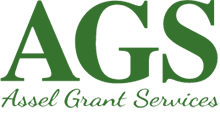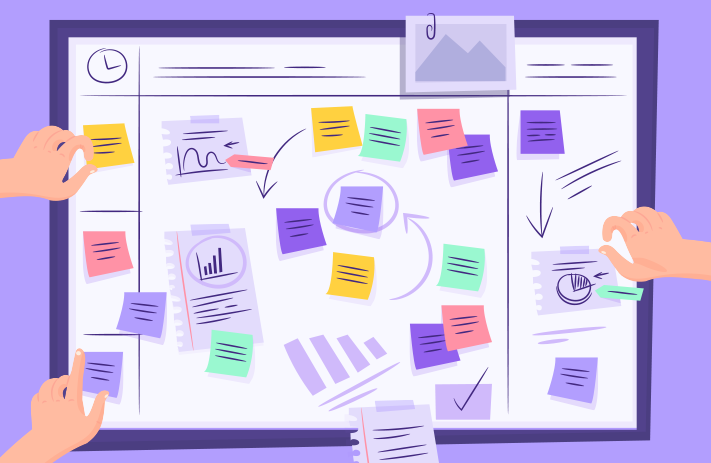Strategy
12 May Should you avoid the elephant in the room…or address it? By Ashley Dooley
Fundraising is not always easy. Some causes more easily tug on donors’ or funders’ heartstrings more than others. I am sure you can picture the TV commercial with sad music and malnourished children urging you to donate just $2 per month to help feed them. As a mother, I feel physical empathy for mothers of infants who do not have enough formula, diapers, and clothes to care for their children. Causes like this produce a warm, fuzzy vibe that you just cannot say no to. Not all organizations naturally evoke such strong emotions. In some cases, the emotions may be negative and that can make fundraising tricky. What if your cause (or organization) is the big elephant in the room blocking funders from seeing the impact you can/do have? Perhaps you are part of a national organization involved in a scandal, a school district that has recently failed accreditation, or a local nonprofit perceived to serve only wealthy people. Each of these situations can make it challenging to raise the money needed, because donors and funders may be blinded by the media or personal bias. How do you overcome that hurdle?10 Mar Small Nonprofit Building Block Series: Tips for Staying Organized by Megan Campbell, MPA, GPC
Staying on top of your grant projects doesn’t necessarily require fancy software or the newest technology. Data or donor management systems are excellent tools, but you only get out of them what you put in. Small organizations sometimes don’t have the staff capacity it takes to utilize all the features they offer. However, if you start organized, it’s much easier to stay organized no matter what system you are working with. Start with the basics. Set up an organized filing or record-keeping process, learn what you need (and what you don’t), and take advantage of technology-supported opportunities when the options arise. If time and cost are obstacles for your organization, here are five tips to keep it together until you have greater capacity:25 Feb Small Nonprofit Building Block Series: Prospect Research by Megan Campbell, MPA, GPC
Prospect research is the term commonly used for the process of identifying potential sources of funding for an organization or program. If your organization is a small or start-up nonprofit with limited staff or development support, the task of prospect research can feel both urgent and overwhelming. Fear not. Here are a few tips for beginning your prospect research process that will help start you on a path to success.18 Feb Small Nonprofit Building Blocks Series: Community Relations by Megan Campbell, MPA, GPC
Defining Small Nonprofits: Whether a nonprofit or not-for-profit, a charitable organization’s “size” is not determined by its facility, number of staff, or services to the public but by the size of its operating budget. Large organizations have operating budgets in the $10- $50MM range, while organizations with annual budgets of $5MM or less are considered small. Large, nationally affiliated organizations tend to get the lion’s share of public recognition and visibility; however, they are not representative of the U.S. nonprofit sector as a whole. In fact, the National Council of Nonprofits reports that 92% of organizations within the nonprofit sector are small organizations with annual revenue of less than $1MM. Yet the reality is that all charitable organizations depend on public and private support (i.e., government or private grants, individual donations, in-kind gifts, volunteers) to achieve their missions, and small organizations often grapple with how to compete in a market publicly dominated by their larger counterparts.28 Jan Denied and Denied Again by: Kellie Brungard, GPC
Posted at 18:00h
in Competency Eight, Funder Relations, Kellie Brunguard, Organizational Development, Relationships, Strategy
Denial can be challenging, especially when your grant proposals seem to be on a losing streak. Before you start rethinking your grant strategy or wondering if you’re doing something wrong, there may be other proactive steps and factors to take into consideration. Grant funding is complex. There are a multitude of funding streams, networks and relationships, and preferences involved—most of which are beyond your control. And while you can do your best to present an aligned, impactful proposal, sometimes you will never know the reason a proposal is denied. Sometimes, a string of denials prompts a self-evaluation to evaluate how you could do better, or you take the rejection personally. While self-awareness is important, so is understanding the factors that are beyond your control in an application.
28 Jan Did You Know: Congressionally Directed Spending by: Ana Teslik, Ph.D., MPA, GPC
Posted at 13:06h
in Competency Two, Funding, Funding Opportunities, Organizational Development, Strategy
Diversifying a portfolio of funding opportunities can be more than seeking foundation and federal grants. In the current funding landscape, organizations have the capacity to add legislative affairs to their ongoing activities in the pursuit of additional funds to achieve their mission.
Did you know that nonprofits are eligible to pursue Congressional Directed Spending and/or Community Project Funding?
21 Jan Applying the Stages of Group Development to Grants By: Shauna O’Toole, MA, CFRE, GPC
Posted at 18:00h
in Competency Four, Competency Three, Competency Two, Culture, Organizational Development, Program Design, Relationships, Shauna O'Toole, Strategy
Have you encountered inefficiency, frustration, or even conflict when working with a group to develop a grant proposal? Take heart. This is normal. Most teams struggle and experience conflict before they begin performing at their peak. The Stages of Group Development framework, developed by Bruce Tuckman (1965) describes this process. This blog will briefly describe Tuckman’s framework and then apply these ideas to grant proposal development.
03 Jan Ready for Reset? So Is Your Grant Strategy by Tracey Diefenbach, GPC
Posted at 19:02h
in Competency Eight, Competency Seven, Competency Two, Grant Calendar, Relationships, Strategy, Tracey Diefenbach, GPC
It’s January. Are you ready for a reset? Better yet, is your grant strategy ready for a reset? I am just hunching here, but I think the answer may be “yes!”
26 Nov Did You Know? Nonprofits are Accountable for Impact Measurement by Roxanne Jensen, Ed.S., GPC
Posted at 20:09h
in Competency Two, Logic Models, Organizational Development, Program Design, Roxanne Jensen, ED. SPEC., Strategy
“When the money keeps rolling out, you don’t keep books. You can tell you’ve done well by the happy, grateful looks. Accountants only slow things down, figures get in the way.” – Evita by Andrew Llyod Weber.
In actuality, did you know that nonprofits are accountable for impact measurement?
Impact measurement is a critical process for nonprofits to assess their effectiveness in achieving their mission and making a positive difference in the communities they serve. By measuring and evaluating their impact, nonprofits can determine whether their programs and initiatives are successful and identify areas for improvement. Impact measurement is a critical aspect of nonprofit management. This aspect involves assessing and quantifying the outcomes and effectiveness of a nonprofit's programs and initiatives in relation to its stated mission and goals. By measuring the impact of their work, nonprofits can demonstrate accountability to their stakeholders, including donors, beneficiaries, partners, and the public.










